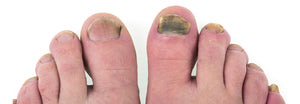A crack, blister, or cut in the skin of the foot might seem like nothing until the wound gets exposed to bacteria and results in an infection. If not treated, it could result in an abscess and increase the risk of cellulitis, a potentially serious condition that can spread to the bloodstream and lymph nodes.
How is a foot infection treated? The first step is identifying it. Below are some of the symptoms of an infected foot to be aware of:
- The basics
The symptoms of an infected foot will depend on the cause. However, they usually start with pain and swelling that won’t go away. Eventually, the infection will look discoloured or form an ulcer or blister.
- Infected blisters
An infected blister looks red and feels warm, and the clear fluid has turned into green or yellow pus.
- Discolouration and warmth
Redness is one of the most common signs of an infection. If the problem is toenail fungus, the nails could change colour, starting with a yellow or white spot under the toenail’s tip and then worsening as the infection progresses.
If the skin around an infected area feels warm, seek immediate medical attention, as that could mean cellulitis. The redness will usually spread and/or create streaks from the infected spot.
- Odour and swelling
Does the foot smell? Draining pus from a sore or an infected ingrown toenail could cause a bad odour. You should also look for signs of inflammation on the infected site or the entire foot.
What to do with a foot infection
See a medical professional (like a podiatrist) as soon as possible. They can address the problem and provide the best treatment. These foot care experts also have access to high-quality professional toenail clippers and other podiatrist tools.
Where to get professional podiatry tools
Drop by Blizzard to find German surgical stainless steel toenail clippers. Their professional toenail clippers are biocompatible, reusable, and fully autoclavable. They are made to the highest standards and come with UKCA, CE, and ISO 13485 certifications.Recent posts

Why Are My Toenails Thick?
Thick toenails are typically painless, but if you leave them to grow too long, they can be uncomfortable. Sometimes, they could be a sign of a fung... Read more
Understanding Ingrown Toenails: Are You Susceptible and How Effective is Surgery as a Solution?
Ingrown toenails occur when the corners or sides of the toenails grow inward and penetrate the surrounding skin. It's important to have a good unde... Read more
Preliminary Signs of a Foot Infection and What to Do About It
A crack, blister, or cut in the skin of the foot might seem like nothing until the wound gets exposed to bacteria and results in an infection. If n... Read more
5 Dos and 5 Don'ts When It Comes to Ingrown Toenails
When a toenail starts to grow into the skin around it, most people look for quick relief. But before you reach for an ingrown toenail clipper, it's... Read more





